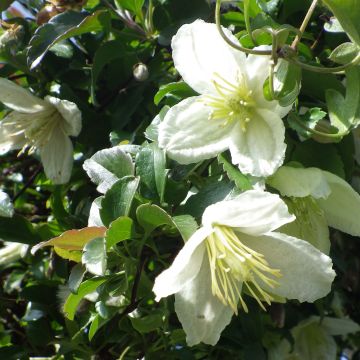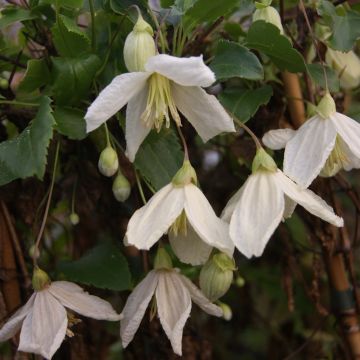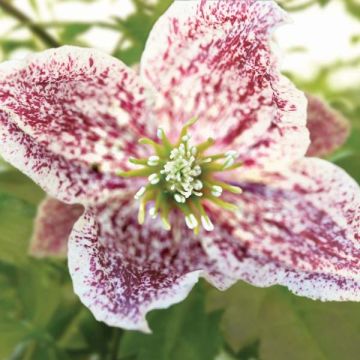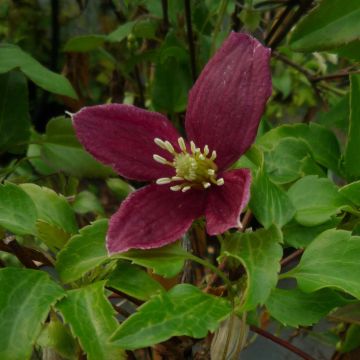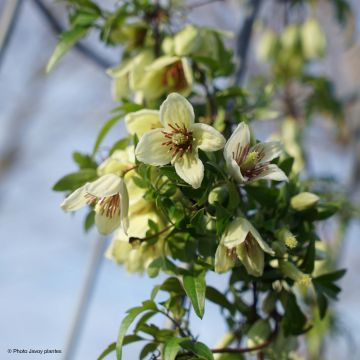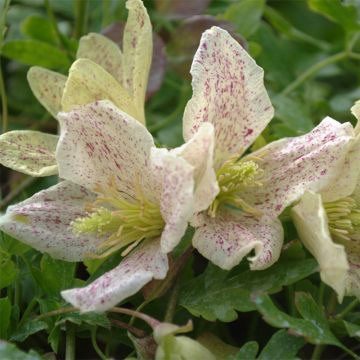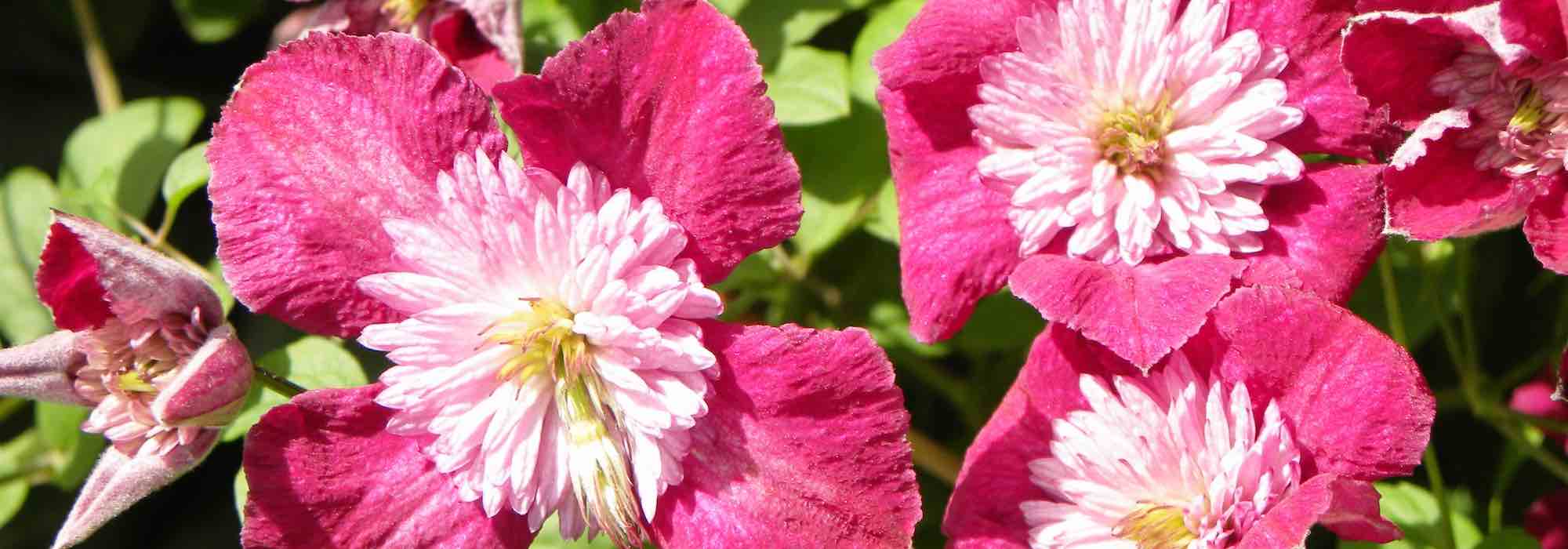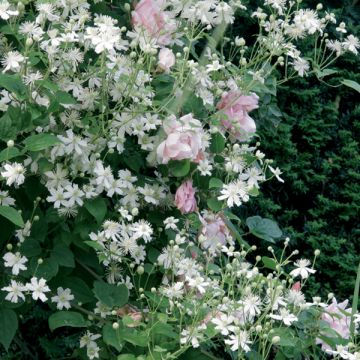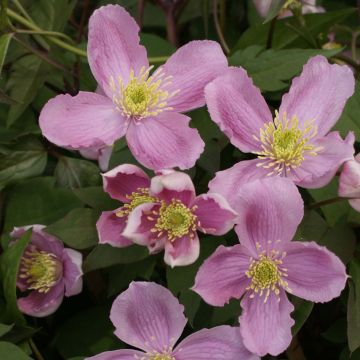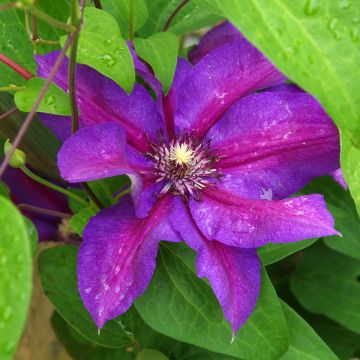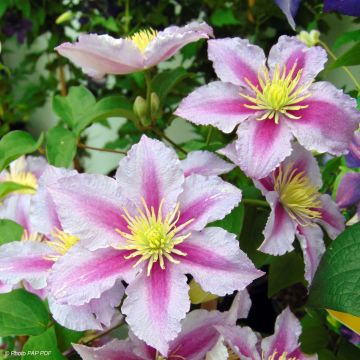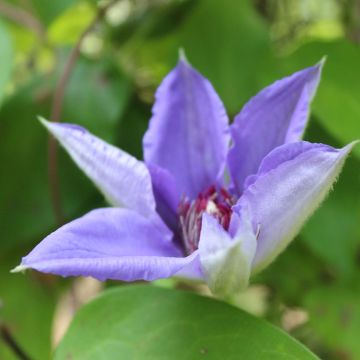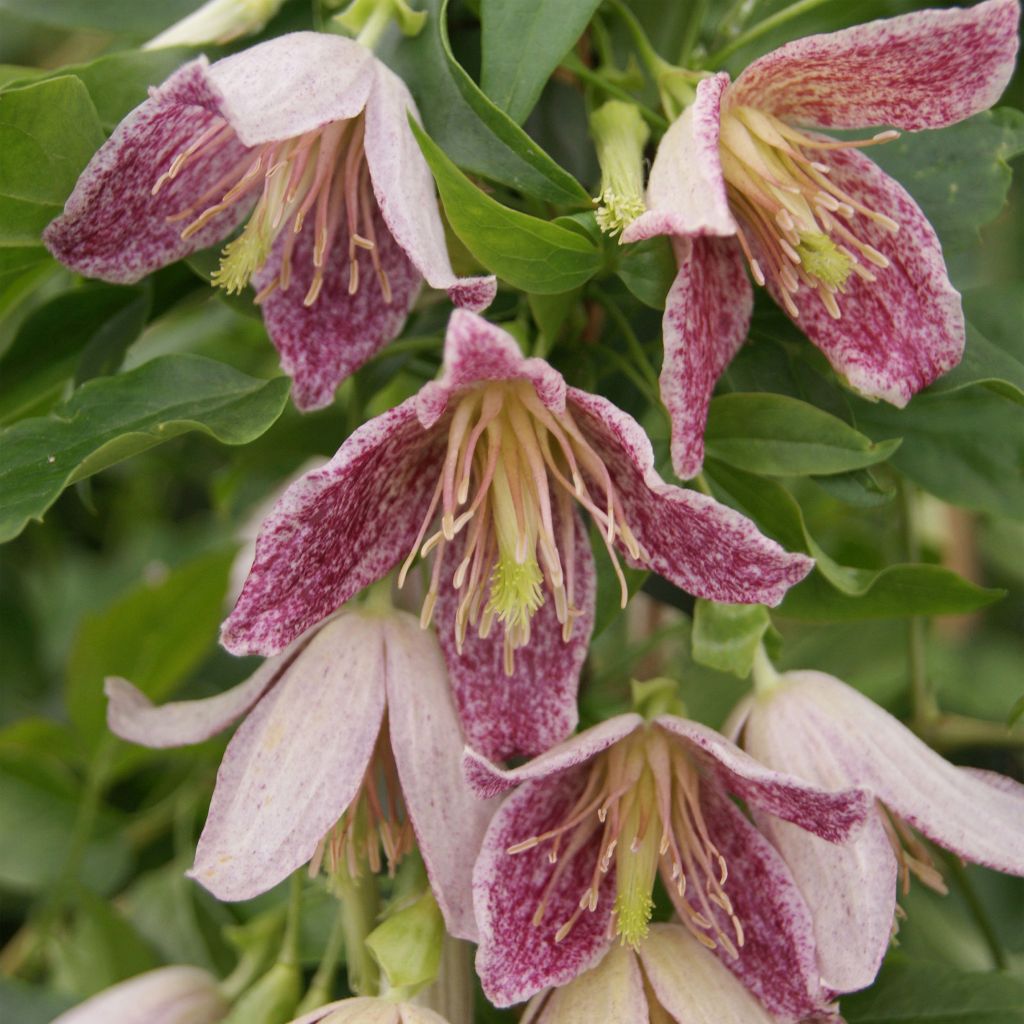

Clématite Advent Bells - Clematis cirrhosa - Clématite de Noël
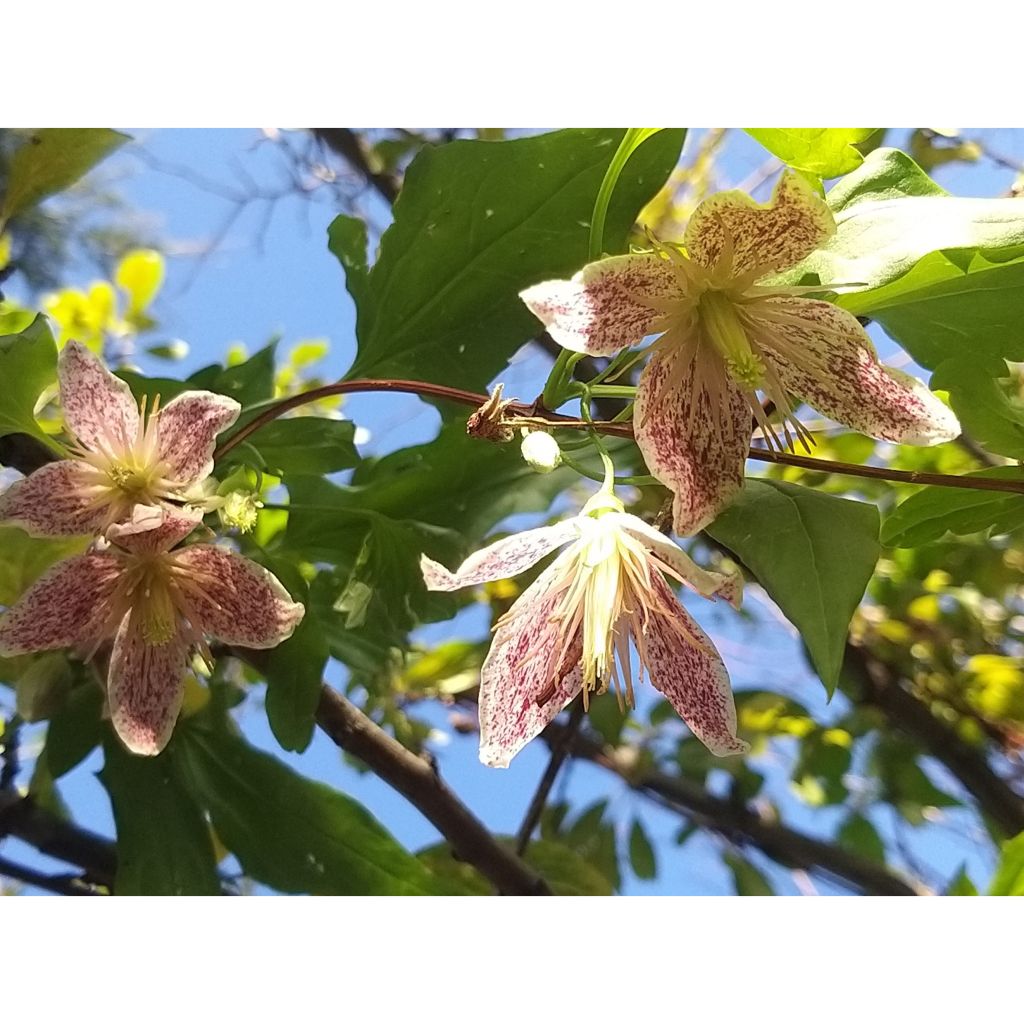

Clematis x cirrhosa Advent Bells
View more pictures
Hide images
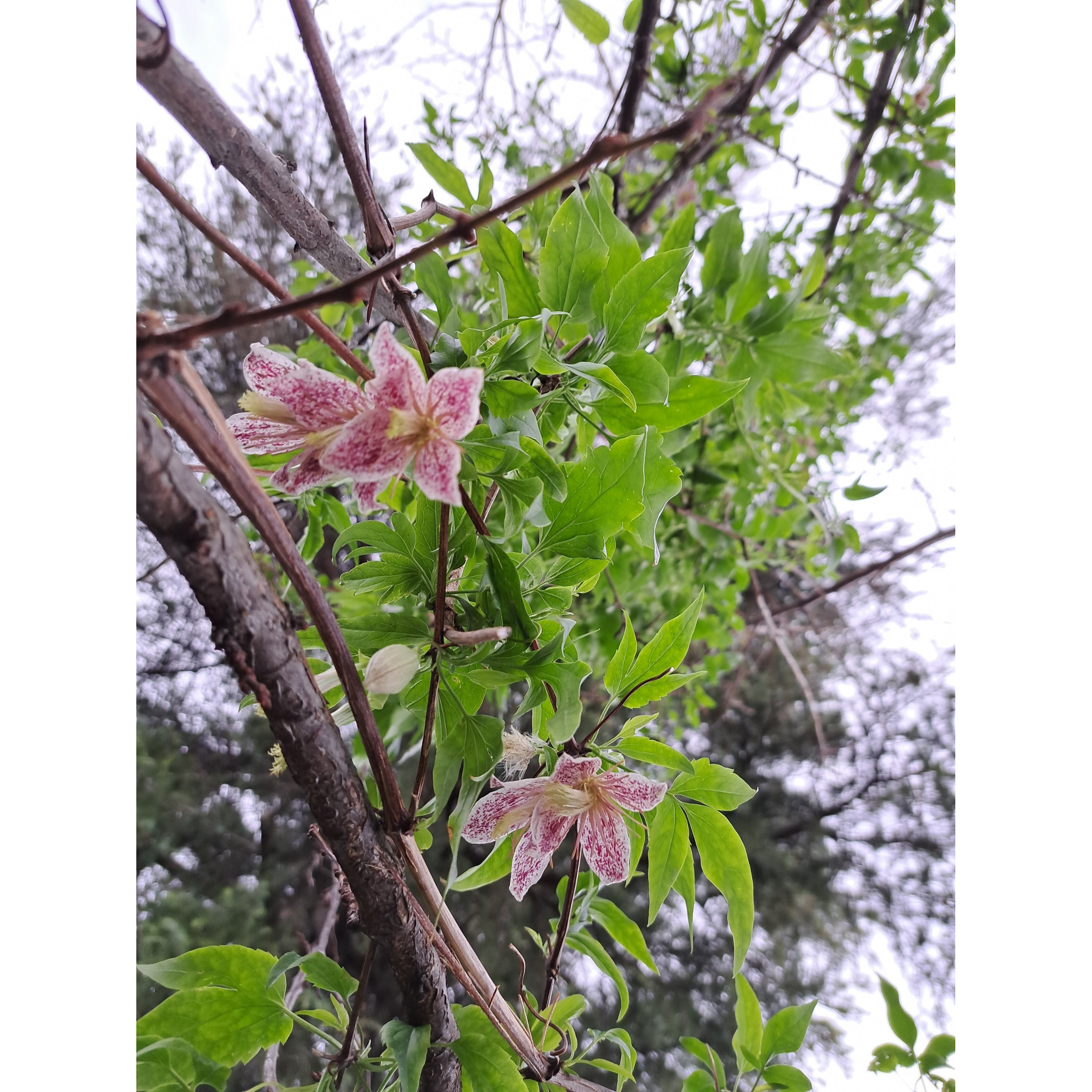
Thierry P.

Flowering in January - picture 20 - Stem, foliage, flowers, pistil.
Thierry P. • 84 FR
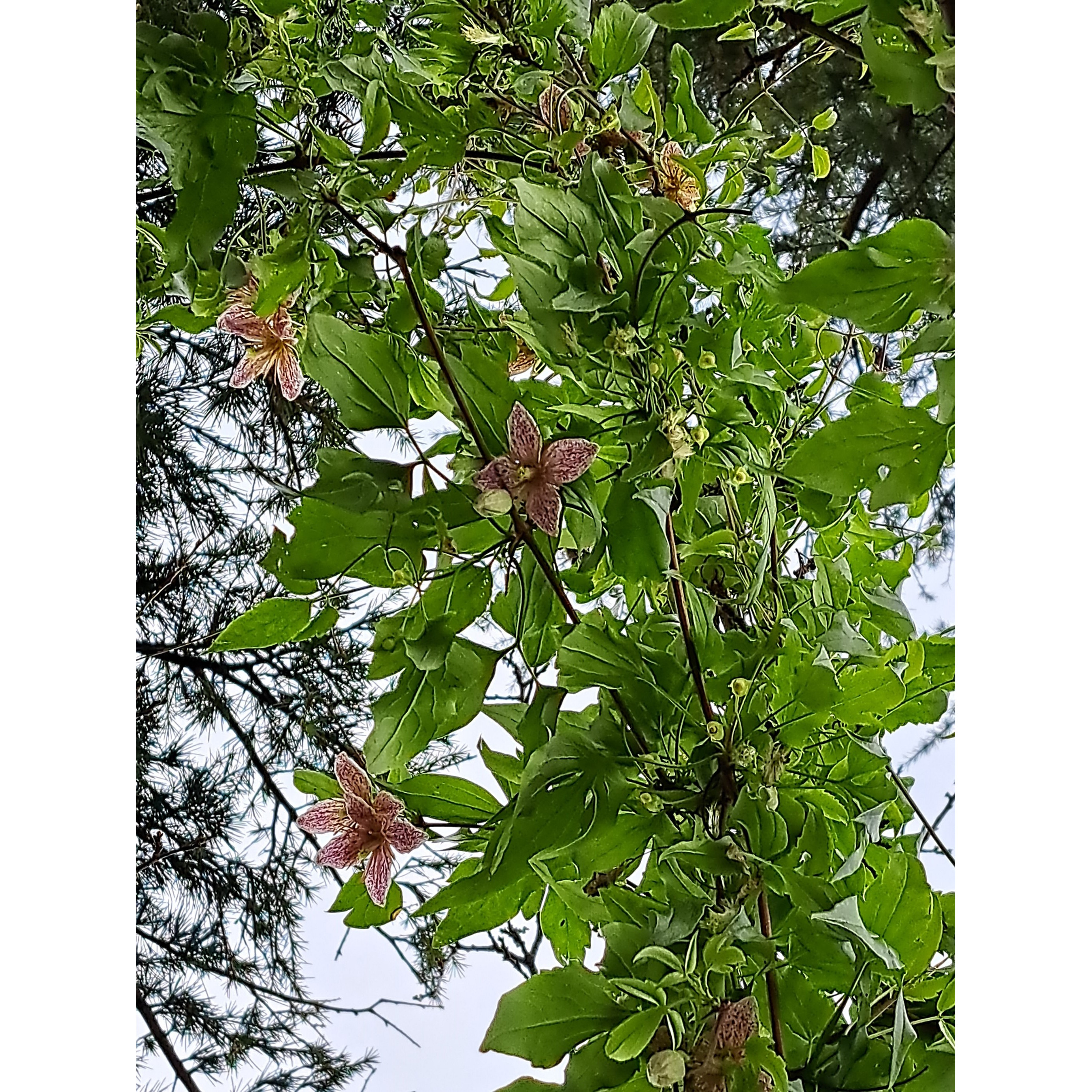
Thierry P.

December flowering - image 17 - Taking on the "Queen Victoria" plum tree.
Thierry P. • 84 FR
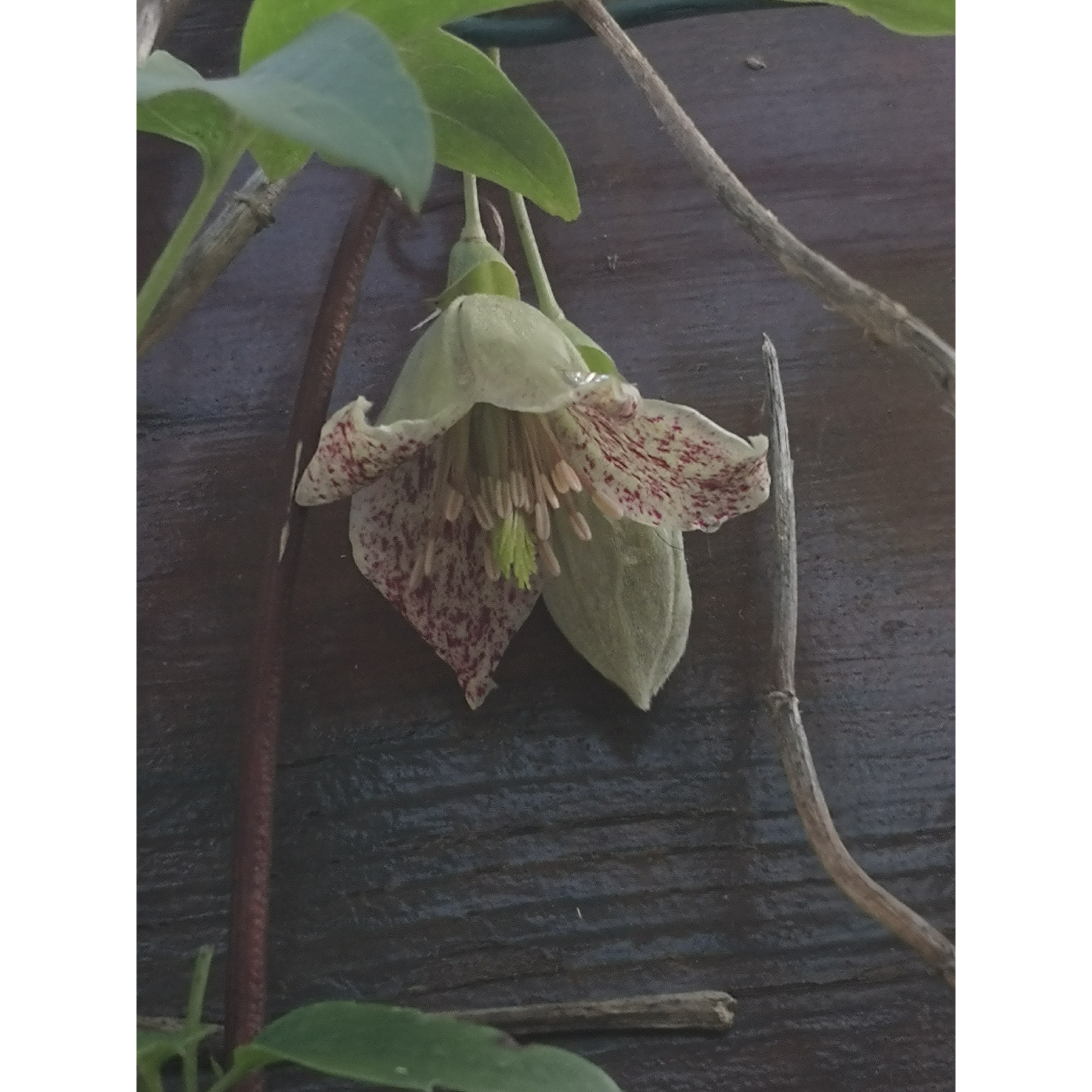
Lisa V.

First flowering Dec. 2022, after planting in spring 2022.
Lisa V. • 35 FR
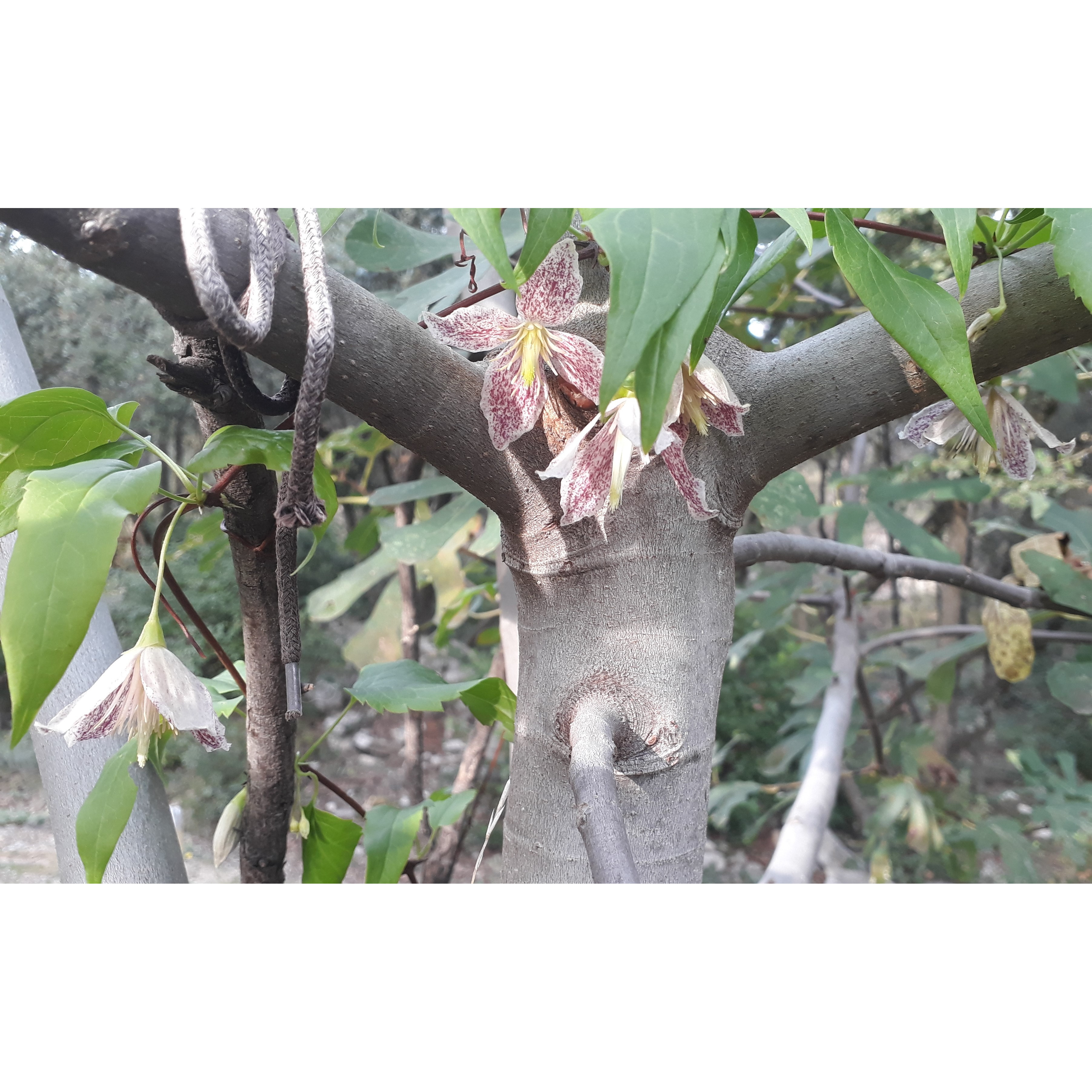
Hélène G.

Flowering in October.
Hélène G. • 34 FR
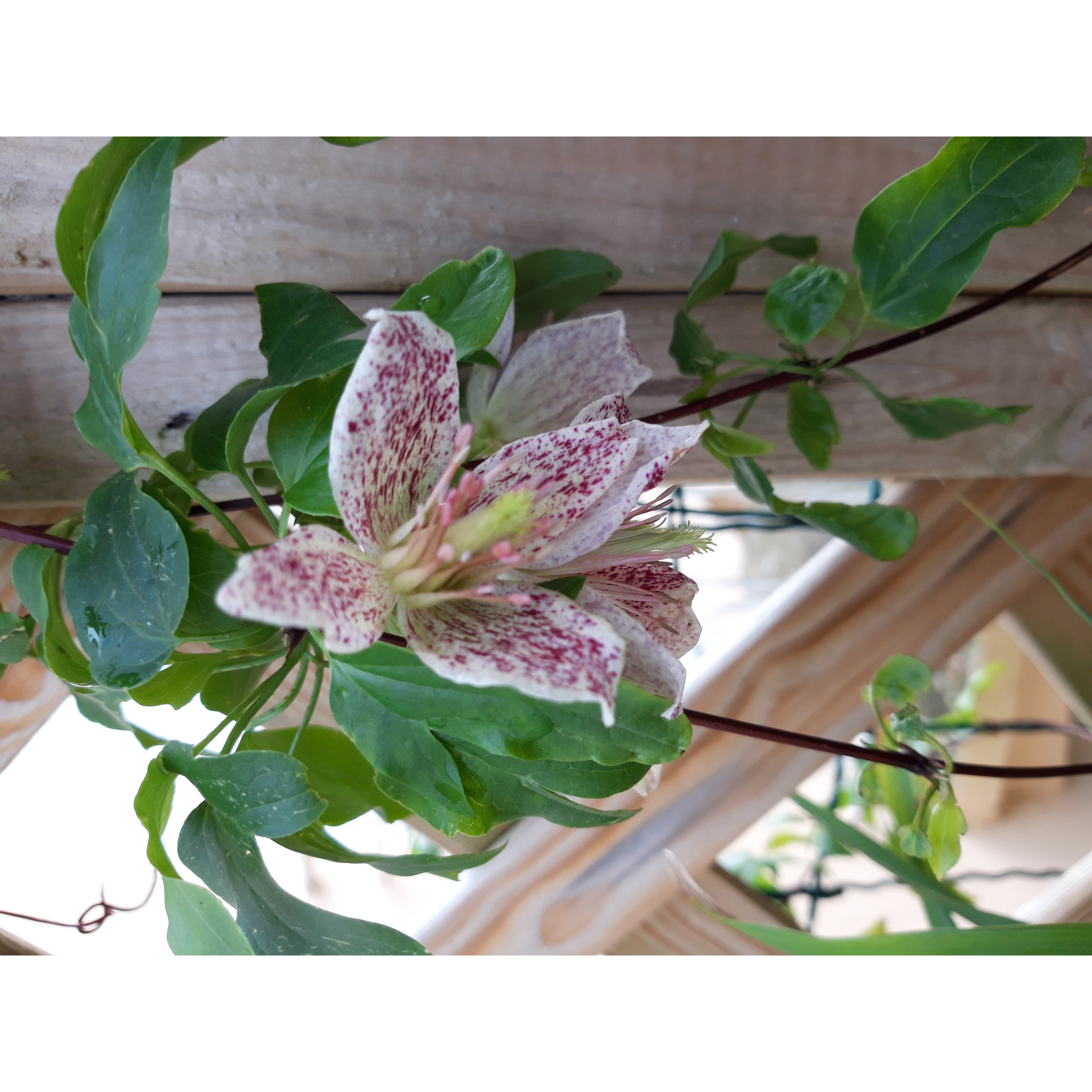
Sylvanie B.

This is a translation task, and the customer review to be translated is: "clématite cirrhosa advent bells".
Sylvanie B. • 29 FR
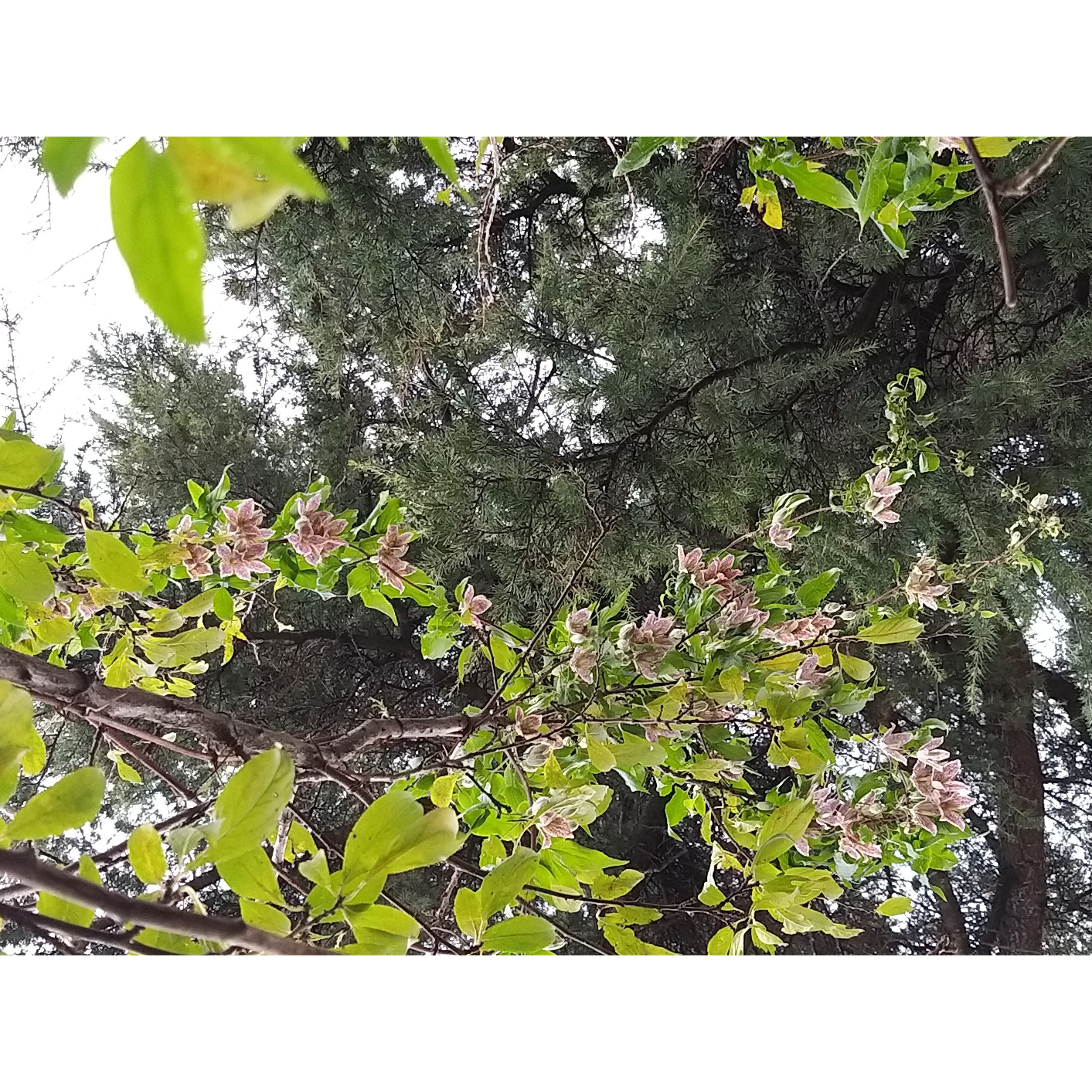
Thierry P.

November flowering - image 16
Thierry P. • 84 FR
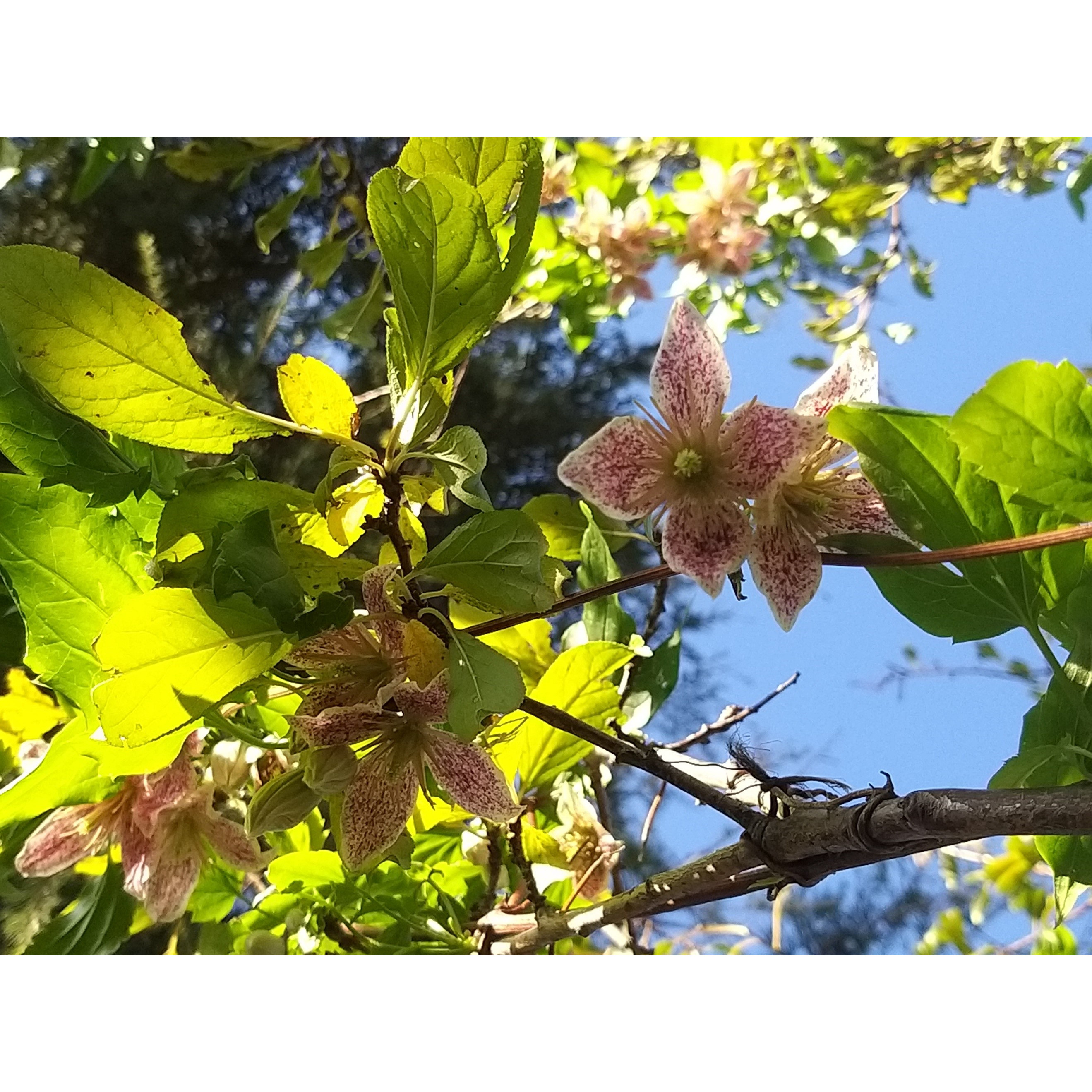
Thierry P.

November flowering - image 15
Thierry P. • 84 FR
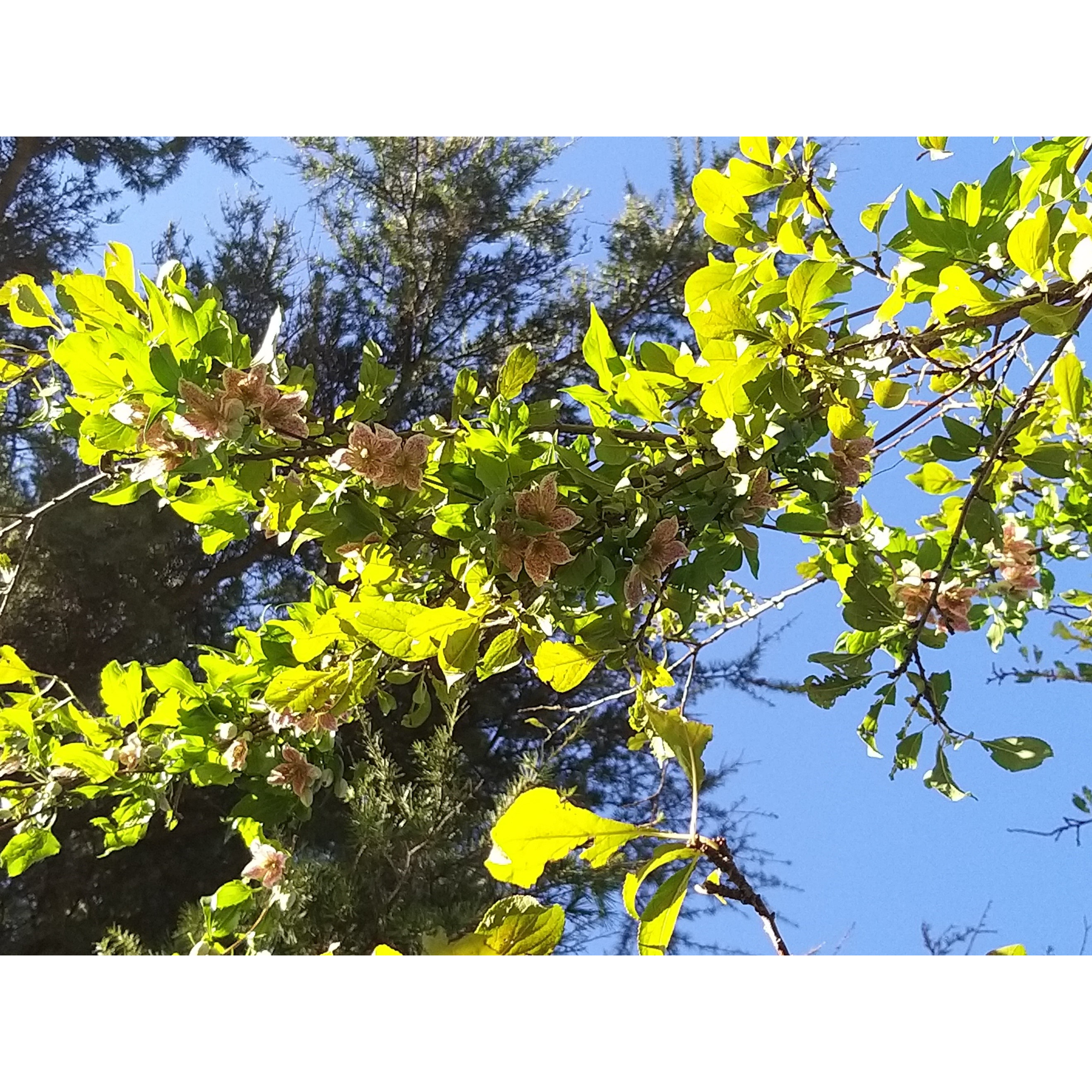
Thierry P.

November flowering - image 12
Thierry P. • 84 FR
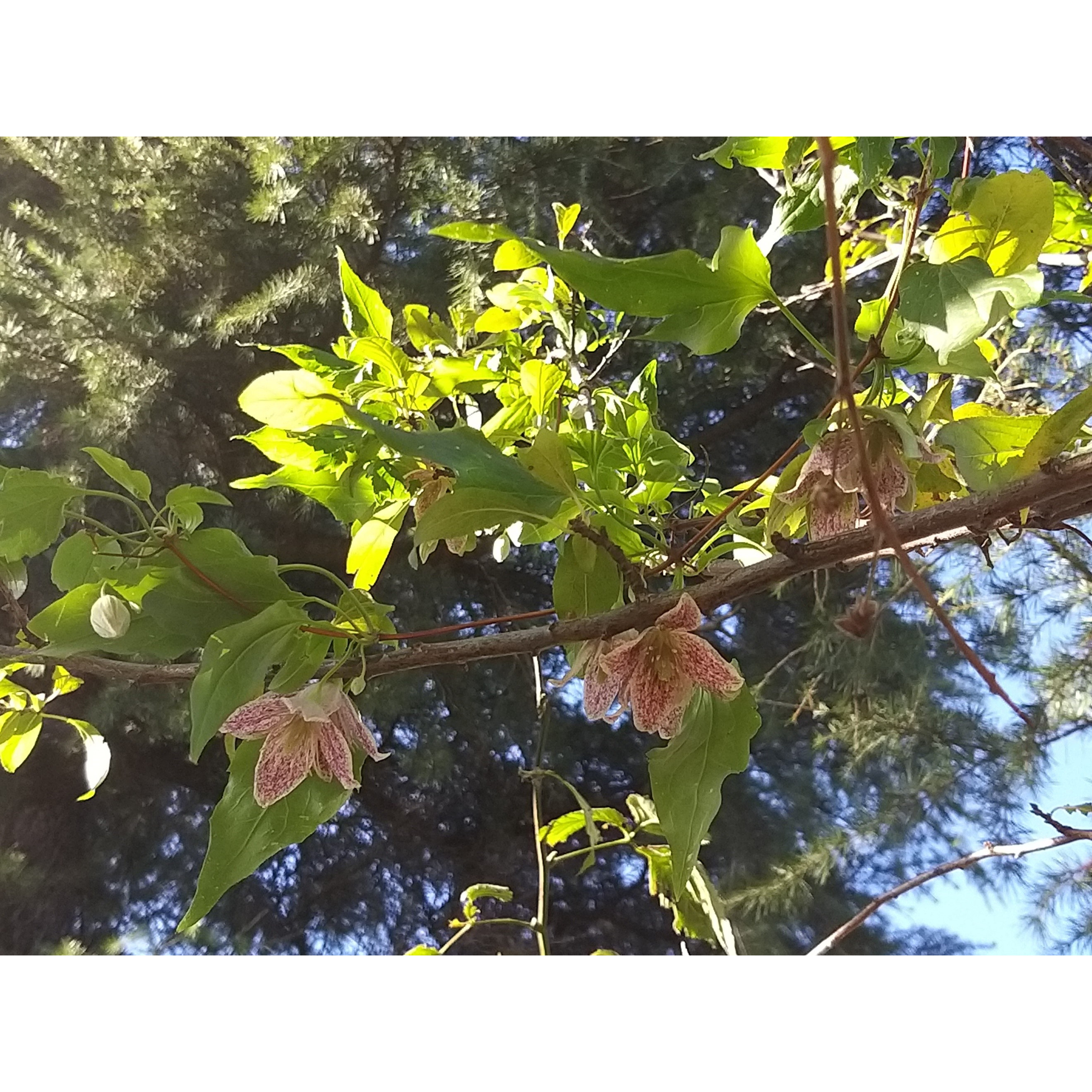
Thierry P.

November flowering - image 11
Thierry P. • 84 FR
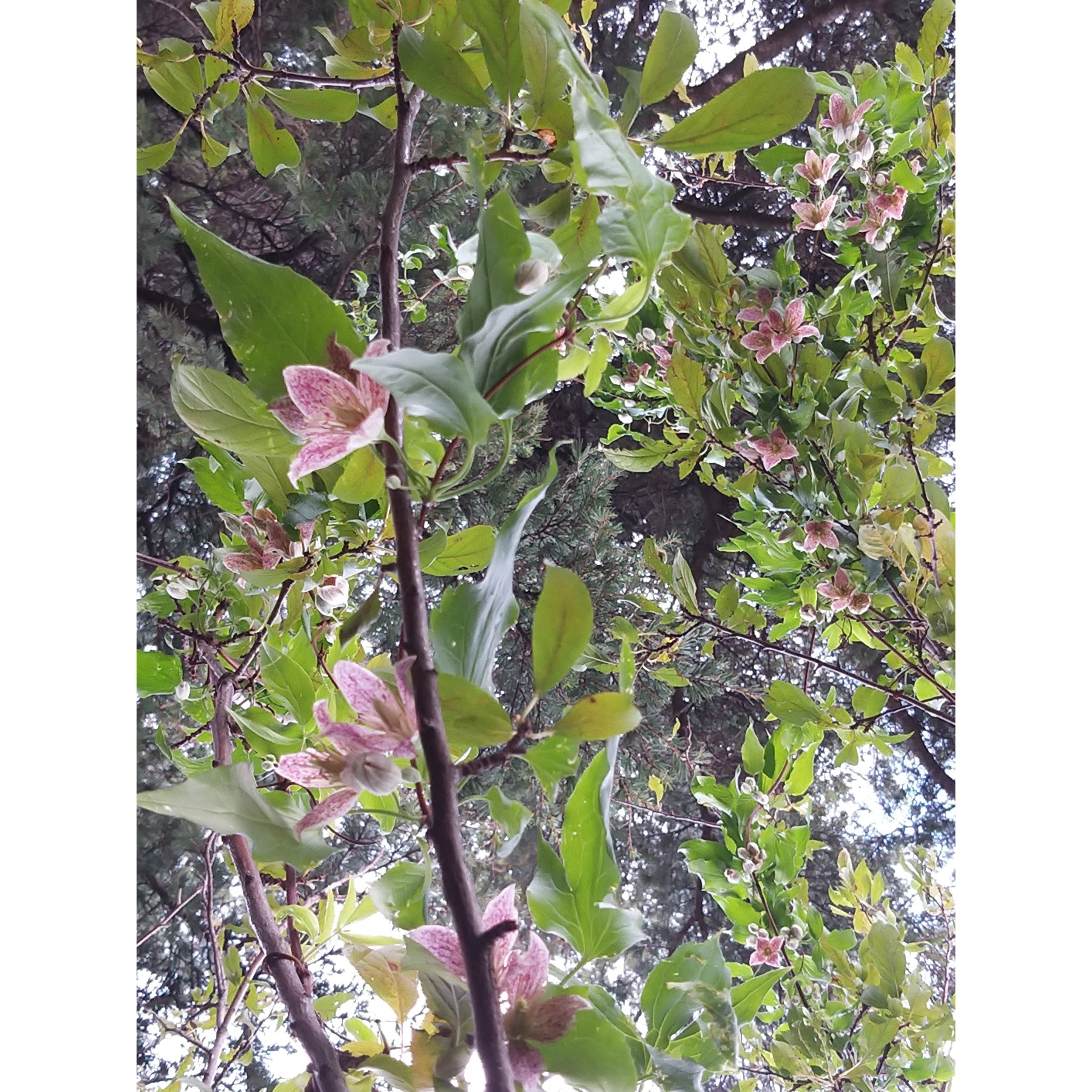
Thierry P.

November flowering - image 10
Thierry P. • 84 FR
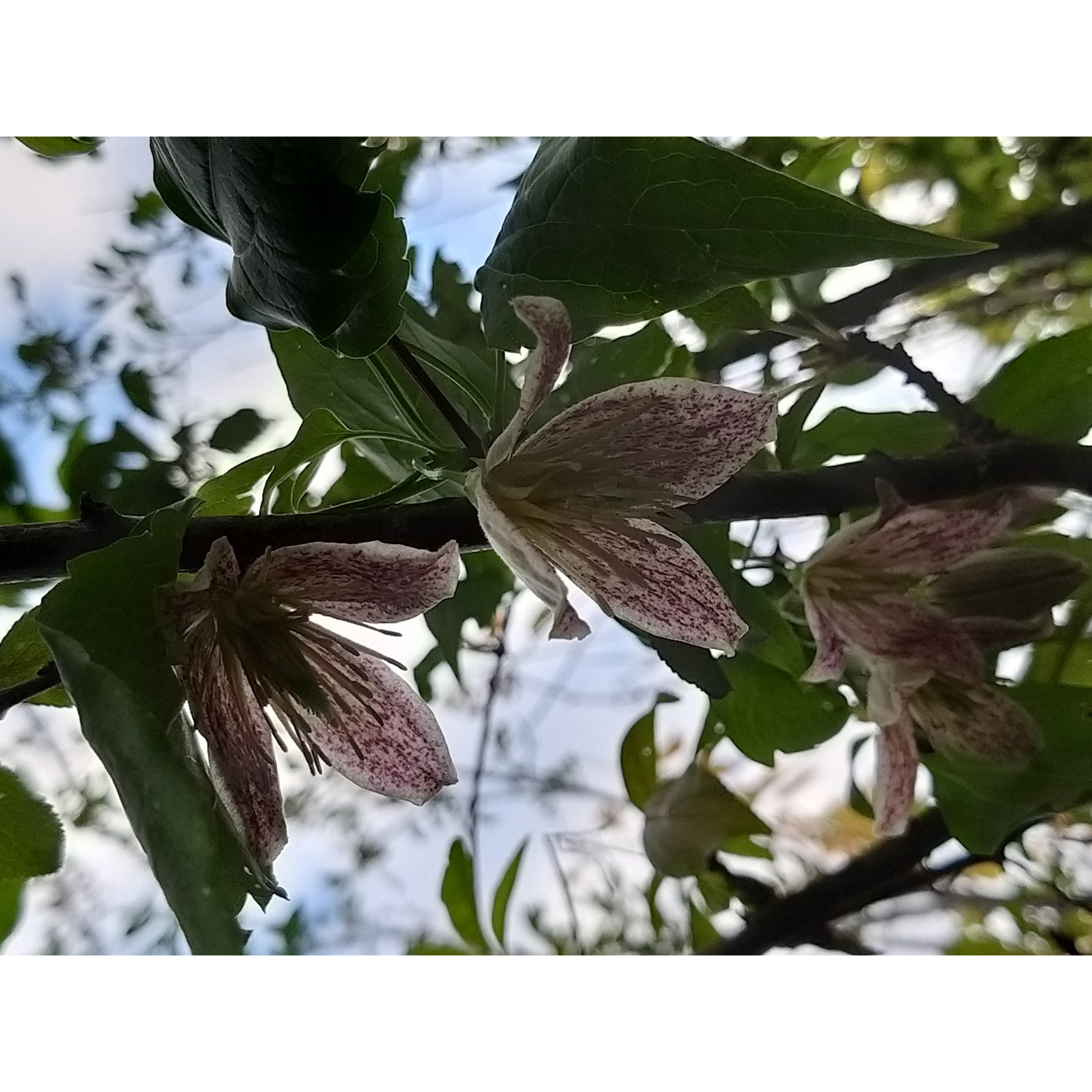
Thierry P.

November flowering - image 9
Thierry P. • 84 FR
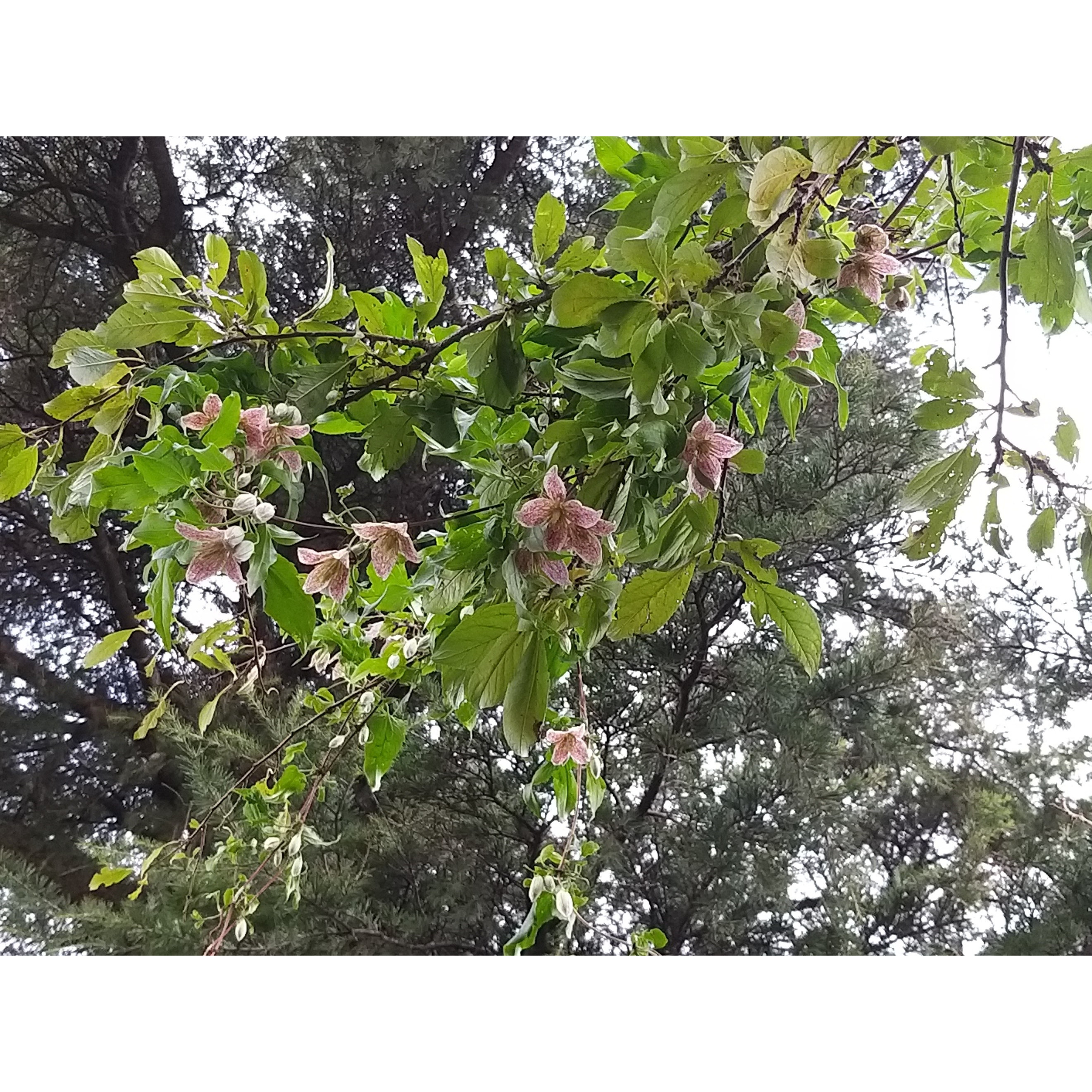
Thierry P.

November flowering - image 8 - The flowers are longer and less wide than the "Freckles" variety.
Thierry P. • 84 FR
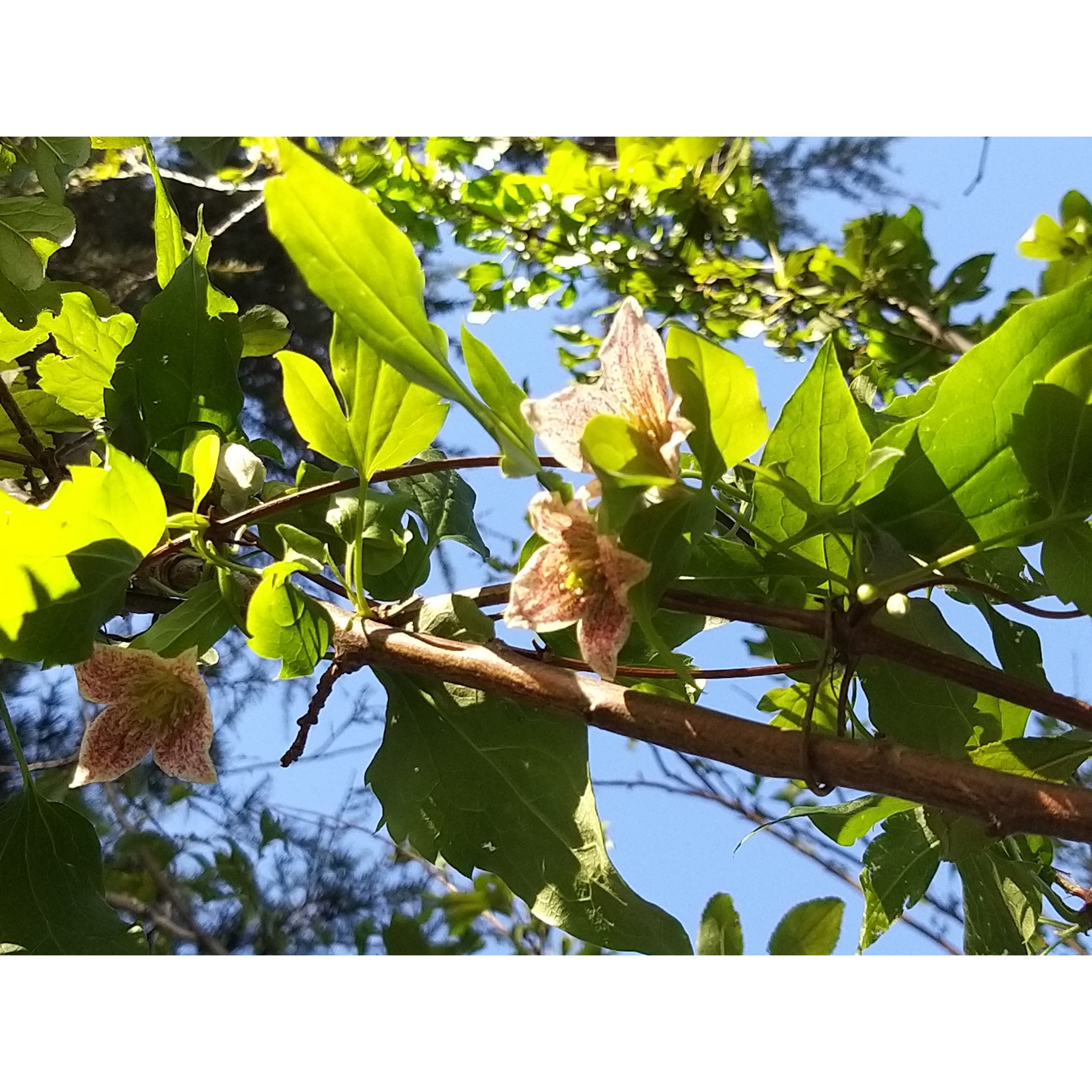
Thierry P.

November flowering - image 7
Thierry P. • 84 FR
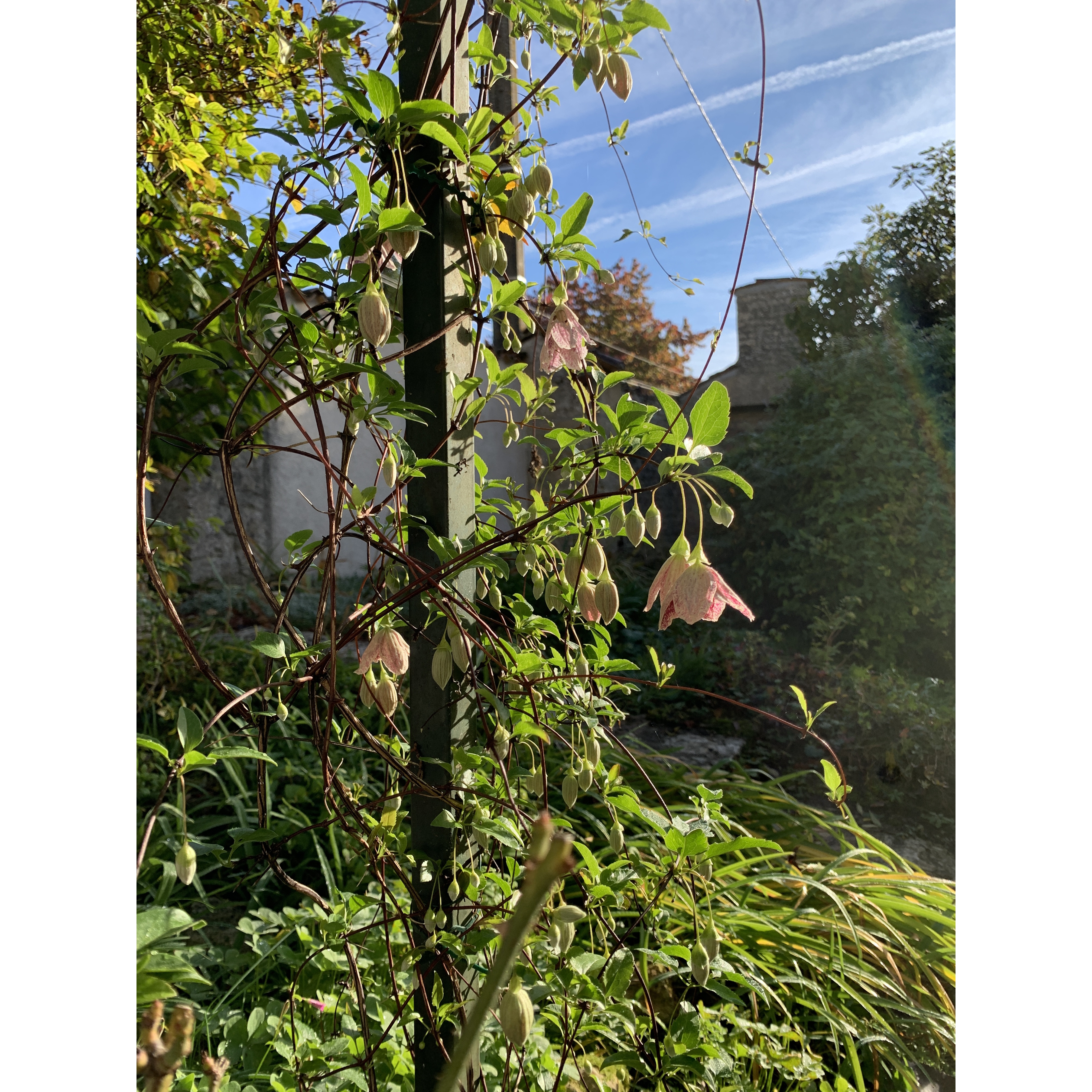
Evelyne B.

Evelyne B. • 17 FR
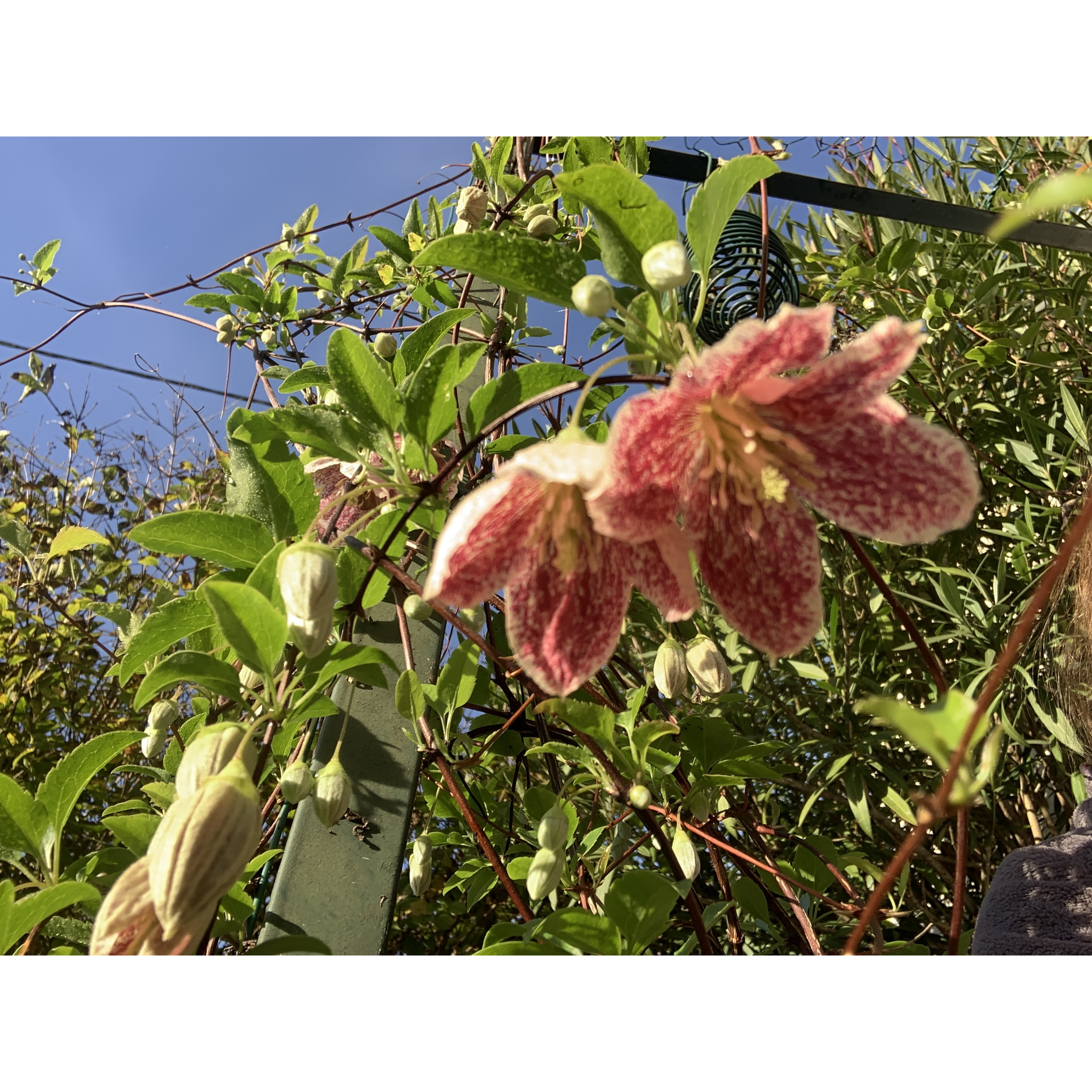
Evelyne B.

I'm sorry, but there is no text provided for the customer review. If you have the text of the review you would like me to translate into British English, please provide it so that I can assist you with the translation.
Evelyne B. • 17 FR
Clematis x cirrhosa Advent Bells
Clematis x cirrhosa Advent Bells
Balearic Clematis, Virgin's Bower
Climbs well
Doralice, 03/06/2025
Special offer!
Receive a €20 voucher for any order over €90 (excluding delivery costs, credit notes, and plastic-free options)!
1- Add your favorite plants to your cart.
2- Once you have reached €90, confirm your order (you can even choose the delivery date!).
3- As soon as your order is shipped, you will receive an email containing your voucher code, valid for 3 months (90 days).
Your voucher is unique and can only be used once, for any order with a minimum value of €20, excluding delivery costs.
Can be combined with other current offers, non-divisible and non-refundable.
Home or relay delivery (depending on size and destination)
Schedule delivery date,
and select date in basket
This plant carries a 6 months recovery warranty
More information
We guarantee the quality of our plants for a full growing cycle, and will replace at our expense any plant that fails to recover under normal climatic and planting conditions.

Would this plant suit my garden?
Set up your Plantfit profile →
Description
The Clematis cirrhosa 'Advent Bells' or clematis is a recent and surprising variety, characterized by winter foliage and flowering. At the height of its beauty while the garden is asleep, it produces clusters of pendulous bell-shaped flowers, white-cream, heavily speckled with red-purple. Its finely cut, evergreen foliage, bright green, sometimes tinged with bronze, sometimes disappears in summer to escape the heat and drought, then reappears in autumn with the arrival of rain. Not very hardy, but drought resistant, this medium-sized variety is best suited to mild climates, where it can be grown in pots and stored in a greenhouse or conservatory during winter.
The 'Advent Bells' Clematis is a woody climbing plant of the Ranunculaceae family, of horticultural origin. Born in England in 2009, its parents are Clematis napaulensis, a rare species native to Nepal, and Clematis cirrhosa 'Freckles', derived from a Mediterranean clematis. 'Advent Bells' has fine voluble stems that easily cling to their support (in Latin, cirrhosa means that it twines like a tendril). It will climb up to 4 or 5m (13 or 16ft) in height and spread over 1.50 to 2m (5 to 7ft). Its flowering sometimes begins in November, on fresh foliage, but most often it occurs in February-March, in the form of numerous clusters of flowers 3.5cm (1in) long and 5.5cm (2in) wide, slightly soft, thick, formed by 4 recurved petals and widely open on a bouquet of pendulous pink stamens. The throat of the flower, white-cream, is entirely striated and speckled with rose-purple. It emits a slight fragrance. The leaves, dark green and glossy, are divided and lobed, with coarsely toothed lanceolate leaflets. The cold often tinges them with bronze reflections. They curl up and disappear as soon as the summer heat and its dryness arrive, usually around June.
The 'Advent Bells' clematis is ultimately a low-maintenance, graceful, and very attractive plant due to its winter beauty. Its only flaw is its low hardiness, although this data is controversial and not widely accessible for this still rarely offered plant. If we look at its parentage, it should be able to withstand -12, or even -15°C (5°F) in a well-drained soil, in full sun and sheltered from the wind. Nevertheless, the sight of its speckled flowers against a leaden blue winter sky remains a wonderful surprise, even under the shelter of a cool conservatory. Due to its growth cycle, it is interesting to train it to climb on a deciduous bush (Vitex, lilac, Cotinus) with a complementary growth cycle. Its cascades of flowers decorate their bare branches in winter. In the scented garden, it can be accompanied by Lonicera fragrantissima, which blooms white in February, perfuming the surrounding air.
Clematis x cirrhosa Advent Bells in pictures
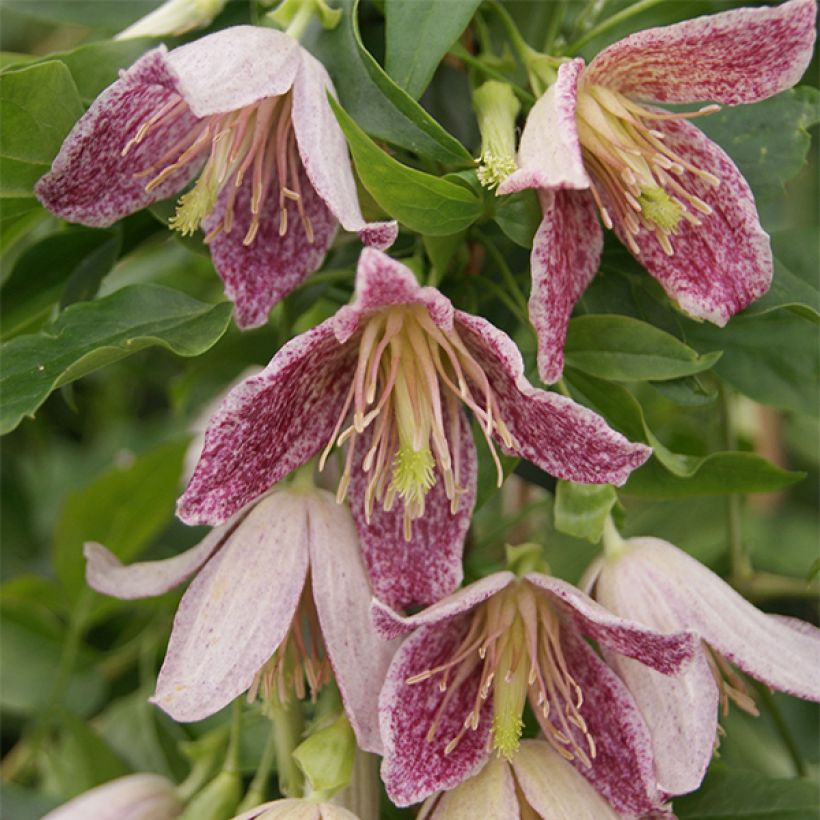

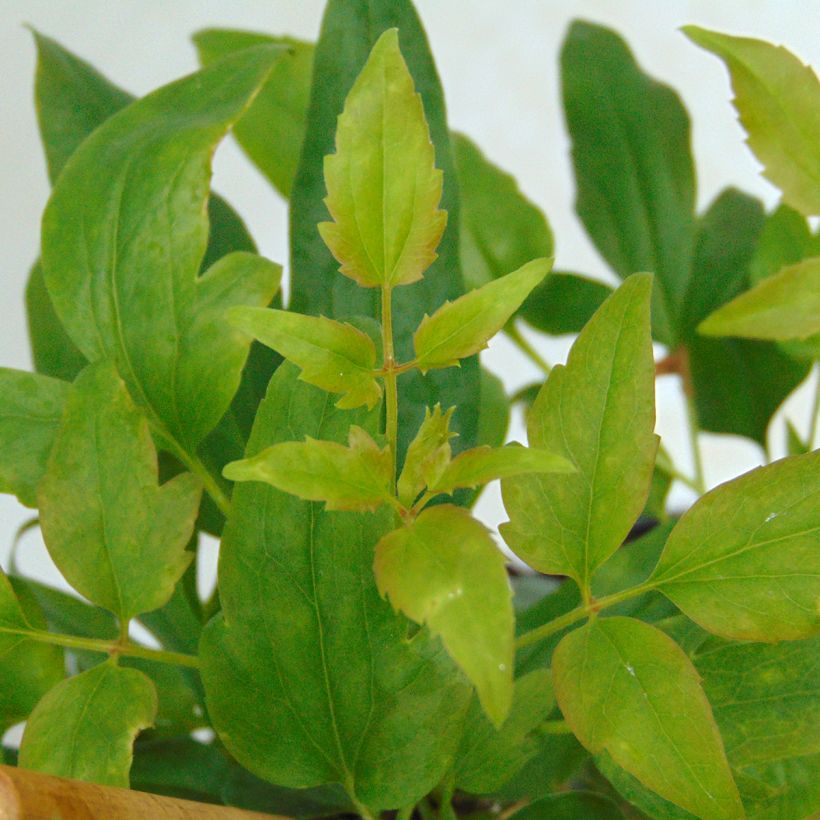

Plant habit
Flowering
Foliage
Botanical data
Clematis
x cirrhosa
Advent Bells
Ranunculaceae
Balearic Clematis, Virgin's Bower
Cultivar or hybrid
Other Clematis Cirrhosa
View all →Planting and care
The Advent Bells clematis thrives in hot climates and dry summers, unlike the Montana variety, for example. It also appreciates the dappled shade of a deciduous tree in summer. Plant it in a fertile, humus-rich, well-drained soil, even if it's dry in summer or slightly chalky, shading the roots and base of the stem (with a flat tile, for example). The clematis wilts in overly wet soil. Install it by covering the root ball with 3 cm (1in) of soil, in soil worked to a depth of 20 cm (8in), lightened with good compost and coarse sand. After planting, cut back the clematis stems to around 30 cm (12in) from the base above a nice pair of buds. Water regularly during the first few weeks. However, be careful not to let the water stagnate as this can cause fungus to develop at the neck. Mulch all clematis plants in February with garden compost or well-decomposed manure, avoiding direct contact with the stems. Train the stems, without squeezing them, until the plant can grip onto the support itself. Clematis plants also enjoy growing freely on neighboring plants.
After a few years, cover the base of your climbing clematis with a small mound of soil to reduce the risk of wilting, while promoting the growth of vigorous shoots from the stump. Voles and grey worms can attack clematis plants and devour the stems. Aphids and greenhouse whiteflies are also potential parasites of clematis plants.
Planting period
Intended location
Care
Planting & care advice
-
, onOrder confirmed
Reply from on Promesse de fleurs
Similar products
Haven't found what you were looking for?
Hardiness is the lowest winter temperature a plant can endure without suffering serious damage or even dying. However, hardiness is affected by location (a sheltered area, such as a patio), protection (winter cover) and soil type (hardiness is improved by well-drained soil).

Photo Sharing Terms & Conditions
In order to encourage gardeners to interact and share their experiences, Promesse de fleurs offers various media enabling content to be uploaded onto its Site - in particular via the ‘Photo sharing’ module.
The User agrees to refrain from:
- Posting any content that is illegal, prejudicial, insulting, racist, inciteful to hatred, revisionist, contrary to public decency, that infringes on privacy or on the privacy rights of third parties, in particular the publicity rights of persons and goods, intellectual property rights, or the right to privacy.
- Submitting content on behalf of a third party;
- Impersonate the identity of a third party and/or publish any personal information about a third party;
In general, the User undertakes to refrain from any unethical behaviour.
All Content (in particular text, comments, files, images, photos, videos, creative works, etc.), which may be subject to property or intellectual property rights, image or other private rights, shall remain the property of the User, subject to the limited rights granted by the terms of the licence granted by Promesse de fleurs as stated below. Users are at liberty to publish or not to publish such Content on the Site, notably via the ‘Photo Sharing’ facility, and accept that this Content shall be made public and freely accessible, notably on the Internet.
Users further acknowledge, undertake to have ,and guarantee that they hold all necessary rights and permissions to publish such material on the Site, in particular with regard to the legislation in force pertaining to any privacy, property, intellectual property, image, or contractual rights, or rights of any other nature. By publishing such Content on the Site, Users acknowledge accepting full liability as publishers of the Content within the meaning of the law, and grant Promesse de fleurs, free of charge, an inclusive, worldwide licence for the said Content for the entire duration of its publication, including all reproduction, representation, up/downloading, displaying, performing, transmission, and storage rights.
Users also grant permission for their name to be linked to the Content and accept that this link may not always be made available.
By engaging in posting material, Users consent to their Content becoming automatically accessible on the Internet, in particular on other sites and/or blogs and/or web pages of the Promesse de fleurs site, including in particular social pages and the Promesse de fleurs catalogue.
Users may secure the removal of entrusted content free of charge by issuing a simple request via our contact form.
The flowering period indicated on our website applies to countries and regions located in USDA zone 8 (France, the United Kingdom, Ireland, the Netherlands, etc.)
It will vary according to where you live:
- In zones 9 to 10 (Italy, Spain, Greece, etc.), flowering will occur about 2 to 4 weeks earlier.
- In zones 6 to 7 (Germany, Poland, Slovenia, and lower mountainous regions), flowering will be delayed by 2 to 3 weeks.
- In zone 5 (Central Europe, Scandinavia), blooming will be delayed by 3 to 5 weeks.
In temperate climates, pruning of spring-flowering shrubs (forsythia, spireas, etc.) should be done just after flowering.
Pruning of summer-flowering shrubs (Indian Lilac, Perovskia, etc.) can be done in winter or spring.
In cold regions as well as with frost-sensitive plants, avoid pruning too early when severe frosts may still occur.
The planting period indicated on our website applies to countries and regions located in USDA zone 8 (France, United Kingdom, Ireland, Netherlands).
It will vary according to where you live:
- In Mediterranean zones (Marseille, Madrid, Milan, etc.), autumn and winter are the best planting periods.
- In continental zones (Strasbourg, Munich, Vienna, etc.), delay planting by 2 to 3 weeks in spring and bring it forward by 2 to 4 weeks in autumn.
- In mountainous regions (the Alps, Pyrenees, Carpathians, etc.), it is best to plant in late spring (May-June) or late summer (August-September).
The harvesting period indicated on our website applies to countries and regions in USDA zone 8 (France, England, Ireland, the Netherlands).
In colder areas (Scandinavia, Poland, Austria...) fruit and vegetable harvests are likely to be delayed by 3-4 weeks.
In warmer areas (Italy, Spain, Greece, etc.), harvesting will probably take place earlier, depending on weather conditions.
The sowing periods indicated on our website apply to countries and regions within USDA Zone 8 (France, UK, Ireland, Netherlands).
In colder areas (Scandinavia, Poland, Austria...), delay any outdoor sowing by 3-4 weeks, or sow under glass.
In warmer climes (Italy, Spain, Greece, etc.), bring outdoor sowing forward by a few weeks.































